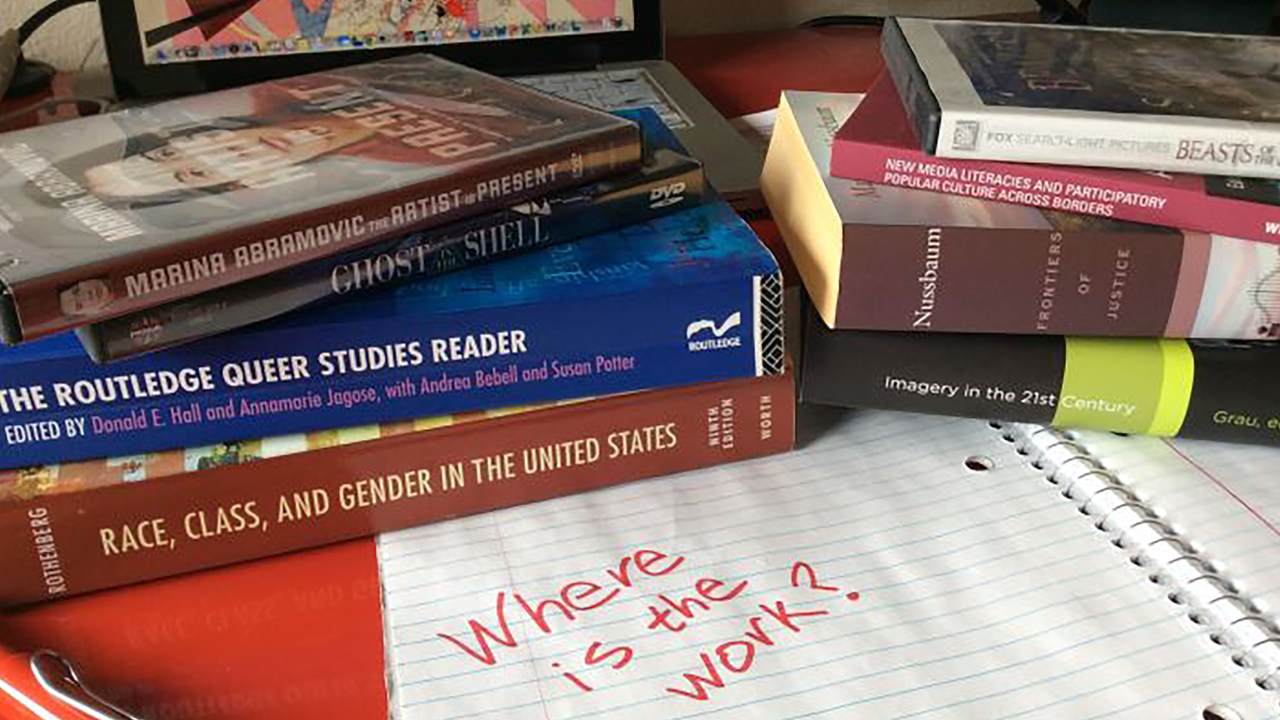
By George Hoagland
Today’s humanities professor isn’t the tweed-patched, undersocialized, clumsy technophobe we imagined scurrying around campus. Nor is she the zany free-spirited instructor who came later; you know, the teacher who just wants her class to feel the subject matter, to experience it on some kind of spiritual level.
Instead, today’s humanities professor networks in several disciplines (many of which fall outside traditional disciplinary boundaries), uses social media platforms as teaching and research tools, writes successful grants for a variety of projects, collaborates with colleagues and industry professionals, and runs apps like nobody’s business. On top of all that, today’s humanities professor doesn’t look like the stereotype either (check out the Twitter hashtag #ILookLikeAProfessor started by historian Sara Pritchard and literary scholar Adeline Koh).
The ivory tower—that image of an isolated, bucolic garden of privilege—no longer represents contemporary university life. Faculty in all disciplines shoulder increasing burdens of dollar-driven scholarship, often measured in the creation of career-ready graduates.
We’ve known about the connections between lab sciences, research grants and job opportunities for a long time, but for the humanities, expectations to train students for specific careers are new, and they’re fueled by national debates about the cost and worth of a college education. In such an environment, humanities professors find that they cannot afford (nor do they want) to maintain an aura of aloof erudition.
With these circumstances in mind, the interdisciplinary scholars who put intersectional analyses at the forefront of their research and teaching practices are, in fact, responding to demands that the university clearly reflect the needs of the greater community. Taking into account issues of race, class, gender, sexuality, ability, age, nationality and other markers of identity, professors like me utilize as many tools as we can to address the complexities of citizenship in the digital age.
This relatively new way of looking at teaching and learning evaluates social power relations, with the goal of equalizing dominant and underrepresented perspectives.
In my own work, I use intersectional analyses to set the terms of both the kinds of scholarship I create and the methods through which I engage the work. For example, when thinking about how and where to publish my writing, I think about the audiences of any particular venue. For me, this means that I choose to disseminate my work in publications that are openly accessible to as wide an audience as possible, rather than those that require expensive subscriptions. This also means that I consider the language I use in my writing, and I try to avoid jargon, theory-speak and the falsely objective third person.
A current project, the Critical Race and Ethnic Studies Pedagogy Workbook shows what this kind of scholarship looks like. It features collaborative writing from a group of dedicated humanities and social science professors, academic specialists and IT professionals, as well as tools for teaching courses that cover a broad range of topics in feminism and technology, and the many ways that race and ethnicity configure those discourses, as well as the ways in which those discourses include issues of race and ethnicity.
This year, as part of a UMD research leave, I worked with scholars from around the globe on a variety of projects that share the same goals: to build inclusivity into digital pedagogy and practices, and to promote ways of being in academia that more clearly reflect the people who work here.
Guided by the question “Where is the work?” I looked to groups such as the Fembot Collective, FemTechNet, the Upper Midwest Queer and Indigenous People of Color Conference, our own Center for Educational Innovation, and UMD’s Women’s Resource and Action Center to address some of the problems scholars encounter when they work from the so-called margins. What I learned during this transformative semester is that the work of teaching and learning intersectional issues isn’t just about fostering inclusivity. It’s also about dismantling the very systems of marginalization that generate the language of inclusivity in the first place.
At a presentation entitled “Designing an Undergraduate LGBTQ Minor,” I asked attendees to consider who on their campuses was responsible for creating and maintaining diversity, how power asymmetries contribute to a lack of self-care for underrepresented workers, and the consequences of burn out/high turnover in equity-oriented positions. From this discussion, the group was able to relate academic issues to labor issues, and I was able to draw a firmer connection between student needs and community needs. As a member of both the campus and greater communities, I understand that the ways that universities categorize stakeholders’ interests is, in fact, a way to maintain the separation between those who have resources and benefits, and those who don’t.
So while thinking about how the work of the humanities is located across disciplines, I also thought about how the humanities are the work; that is, I see the relationships between technical skill development, civic participation and career proficiency as embedded within the humanistic tradition, rather than as addenda to it. This understanding is the foundation of my current research, and explains why the work takes a variety of forms, from an online open-access pedagogy workbook for critical race and ethnic studies, to multimedia presentations on transnational visual literacy, to the creation of UMD’s new LGBTQ minor, to more traditional writing on minor perspectives in literary history.
The work is here, right where it’s supposed to be.
George Hoagland is an assistant professor in Women, Gender, & Sexuality Studies at University of Minnesota, Duluth. Her areas of research include visual literacy pedagogy, cinema and new media studies, critical race theory, queer theory, and literary history. She is the author of “Paul Beatty’s Slumberland and the Myth of Blackness” in Ethnic Literatures and Transnationalism: Critical Imaginaries for a Global Age (Routledge, 2015).